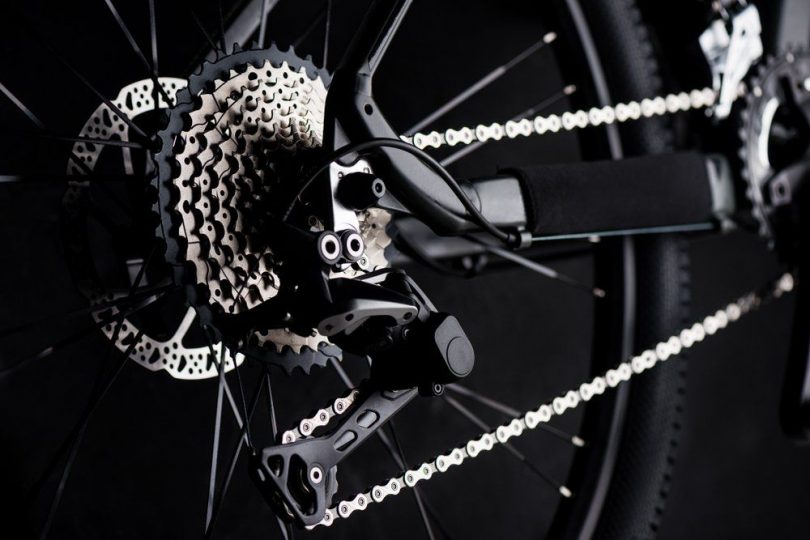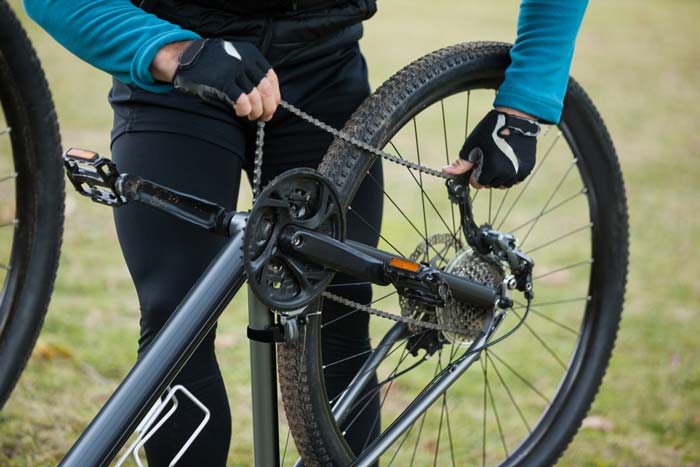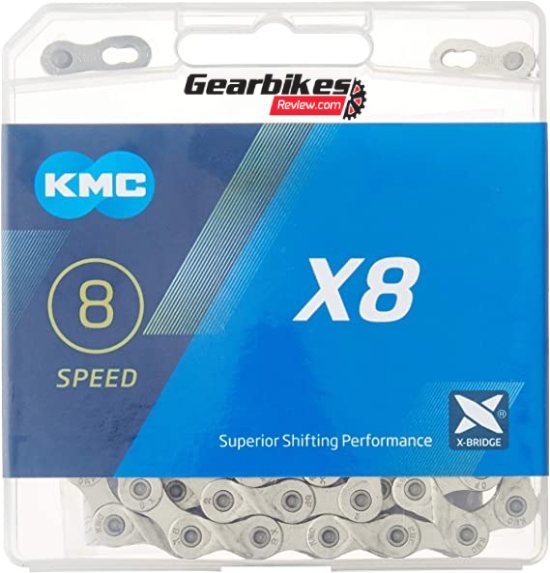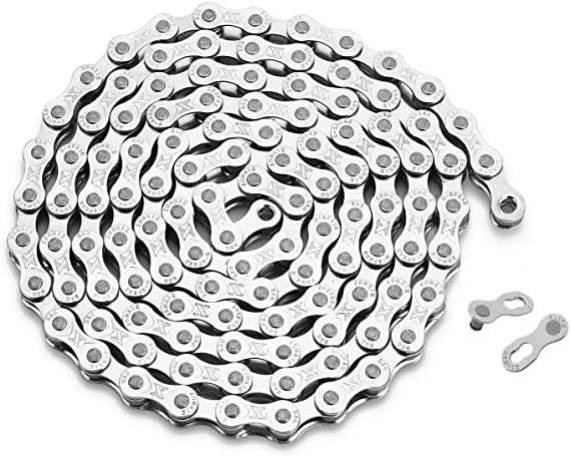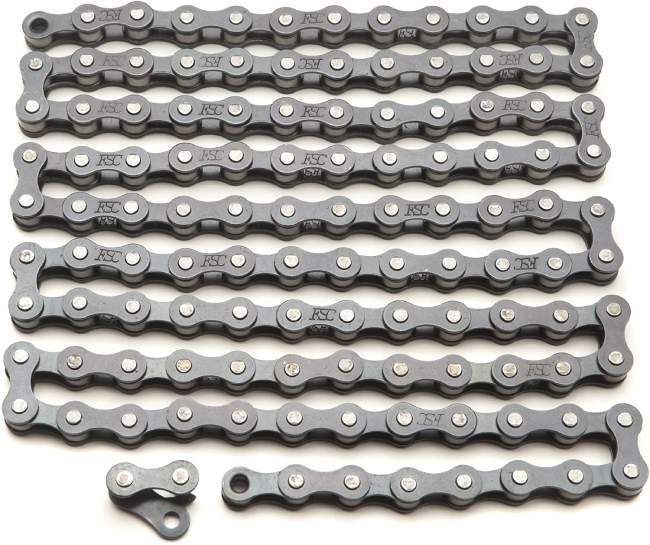Bike chains are an essential part of your bike that needs regular attention and care. It’s a delicate part with the potential to harm the other bike parts if proper care is due. If you are interested in knowing your bike chains, you’re in the right place.
Today, we are discussing everything you need to know about the bike chain. We’ll talk about the price, the maintenance process, and different types.
We’ll also provide a buying guide to help you make an informed decision.
How Much Does A Bike Chain Cost
A bike chain can cost you anywhere between $10-100 based on the quality. The more gear your bike has, the more you’ve to spend on quality chains. What’s more, light chains are more expensive than their heavy counterparts.
The main job of your bike chain is to improve efficiency and there is no one-size-fits-all.
For average roadside trips and weekend travels, spending around $50 is enough to get decent results. If your riding type/frequency is different, you’ll need to invest more in your bike chains.
Replacing vs Repairing: Which is Costlier
Chain repairing is easier than you think. With the right tools, you can easily replace/repair your bike chains yourself, even if you have no prior experience.
Both repairing and replacing can be done within minutes but will require some tools and practice. If you want a professional to handle your bike, a service charge will be added to your bill.
You’ll need a chain tool to repair or replace your bike chain yourself. The tools will cost $10-100 for once, eliminating your need to spend service charges afterward.
However, even a 15 min job for professionals can become an hour-long hassle for inexperienced ones. A decent quality bike shop will probably charge you $20-50 for replacing the bike chain (including the chain’s price) and around $10-20 for repairs.
One thing is worth mentioning here. If your chain becomes worn enough, it can harm other parts of the bike like the cassette, cog, or chainrings. It will be economically wise to replace your chain before it becomes too loose.
Simple repairing is enough before reaching that point. If you don’t replace your chains on time, you risk losing something more intricate and costly.
Signs That You Need to Replace Your Bike Chain
Rust in chain
If there is visible rust in your chain, it is high time to consider a replacement. Rust corrodes the chain, making it more brittle. If unchanged, it can also affect your derailleur or other metal parts of your bike. Rust reduces your bike’s cleanness and visual appeal too.
Worn out chain
Chains get worn out if they are regularly used or come in contact with moisture. Every time you use your bike, it stretches the chain a little bit until it becomes longer than necessary. The hold of the pins, which connects the chain together, also reduces over time.
A stretched chain can accelerate the wearing of your cassette and chainrings. When that happens, It’ll be difficult for your bike to shift and navigate the road.
Snapped chain
If your chain gets snapped while shifting the front derailleur or pedaling hard, consider replacing the chain. Chains may also break if it gets twisted or any object gets attached to them. The chain cannot tolerate the increased tension.
Mileage expiration
Chains also have an expiration time. On average, a chain can be used for around 1,500-2,000 miles. However, a chain can last longer if you lubricate and maintain it regularly.
Types of bike chains
One-speed chains
They are specially designed for bikes that have two sprockets. One-speed chains are better for grinding but have limitations. These chains are a bit wider and cheaper.
The usual length of a one-speed chain across the bike’s rivet is 9mm. You are free to choose either ? inches or 3/16 inches wide chains.
Derailleur chains
Derailleur chains can be used with more sprockets than two. Modern-day bikes usually have 5-12 sprockets. The more sprockets you have, the narrower the chain will become. Count the rear sprockets to understand which chain will be the best for your bike.
Modern Derailleur chains range from 5.3-7 mm. Don’t use a 10/11-speed chain on 8/9 speed chainrings and vice versa to ensure a smooth riding experience.
Top 5 Bike Chains
Shimano (Price range: $25-80)
Shimano is a widely known supplier of bike accessories. Their chains are durable and efficient. Even the cheapest Shimano HG71 can serve you for more than 1000 miles. You can find the perfect chain for your 10-speed bike for around 80 bucks.
ZHIQIU (Price range: $10-20)
If you are looking for a more budget-friendly option, you can go for ZHIQIU. They have a wide range of products for different bike types.
The quality of the chains is also satisfactory. ZHIQIU has paused supplying bike parts, most probably because of the recent pandemic, and hopefully will start production again soon.
KMC (Price range: $6-90)
Bike chains don’t get cheaper than this. If you are looking for the cheapest solution, KMC has something to offer. Their products range from under $10 to almost $100. KMC has something for everyone and this versatility has made KMC one of the popular brands on the market.
ZONKIE (Price range: $15-20)
Here is another cheaper solution that you can use on your bike without much worrying about the quality. ZONKIE has been operating on the market for quite some time and knows what bikers like us want. That is why they provide decent quality at an affordable range.
Schwinn (Price range: $7-15)
Schwinn is an American bike brand that excels in bike parts and offers a good range of efficiency in this price range. They don’t use master links, so using their chains can be a little tricky for newbies.
Things to Consider Before Buying a Bike Chain
Bike Type
Mountain bikes are heavier than regular street bikes and for good reason. The type of your bike and your riding style will dictate what type of bike chain you’ll need to use.
Mountain bikes need chains that will combat dirt and dust well. Roadside-bike chains need to be lighter. BMX bikes use single-speed chains. Lighter chains also help with performing tricks.
Speeds
Your bike most probably has a speed number. It ranges between 5-12 and is even called “gears” in many parts of the globe. Depending on the speed number of your bike, you’ll need to choose the appropriately sized chains.
| Speed Number | External Width (Inches) | Internal Width (Inches) |
| 5/6/7/8 speed | 9/32? | 3/32? |
| 9 speed | 1/4? – 9/32? | 11/128? |
| 10 speed | 1/4? – 9/32? | 11/128? |
| 10 speed narrow | 7/32? | 11/128? |
| 11 speed | 7/32? | 11/128? |
| 12 speed | 13/64? | 11/128? |
Materials
The most prominently used materials for bike chains are alloy, nickel, or carbon. Some chains come with additional gold plating for more aesthetic volume but the core material remains the same.
Nickel and other alloys are used to make the cheaper chains whereas carbon is used for high-end products.
Time Used
It wouldn’t be wise to expect a decent-quality bike chain to serve you for a decade. A good quality chain can support an average rider for roughly 750-2000 miles. Costlier ones will give you more time and mileage.
However, it all comes down to how you feel. You can even get more than 4000 miles of mileage from a single chain if you ride occasionally. If you start to feel like your chain is having issues, change them ASAP. Otherwise, the chain can affect other parts and cost you more money.
Are Expensive Bike Chains Worth It?
That’s complicated. If you ride rarely then you don’t need to invest in expensive bike chains just to show off. You’ll probably be good with a bike chain that’s under $10.
Usually, the costlier a chain is, the lighter it feels and the more durability it provides. If you are a heavy rider and ride on tough terrains regularly, a lighter and sturdy carbon chain will give you some edge.
If you regularly clean your chains and take proper care, even a cheap chain will serve you for many days.
FAQs
Q. How do I know if my bike chain is worn?
Bike chains get stretched as they are used. The pins that hold the links together will loosen over time, making your chain seemingly longer/looser. The ability to shift smoothly and efficiently will become compromised.
If you find cracks/deformities in your chains or feel greater slack while shifting speeds, change your chains. You can use a ruler or dedicated tools to inspect your chains.
Q. Should I replace a rusty bike chain?
Yes. If your chain has a lot of rust, it can damage other parts of the bike. You should change a heavily rusty bike chain immediately.
However, if your chains only have a little surface rust, you can just clean it off with some lime juice or rust removers.
Q. How many miles does a bike chain last?
Decent quality chains serve for 750-2000 miles on average. However, the mileage depends on many factors like the rider’s body type, riding style, shifting pattern, weather conditions, maintenance, and terrain type. There is no definitive answer here.
Q. How can I make my bike chain last longer?
The key is to keep the chain lubricated and clean. Using proper lube can increase the lifespan of your bike’s chain. The most dangerous foes for your chains are time and rust/dust. Clean and maintain your bike chains regularly and you’ll get better mileage.

